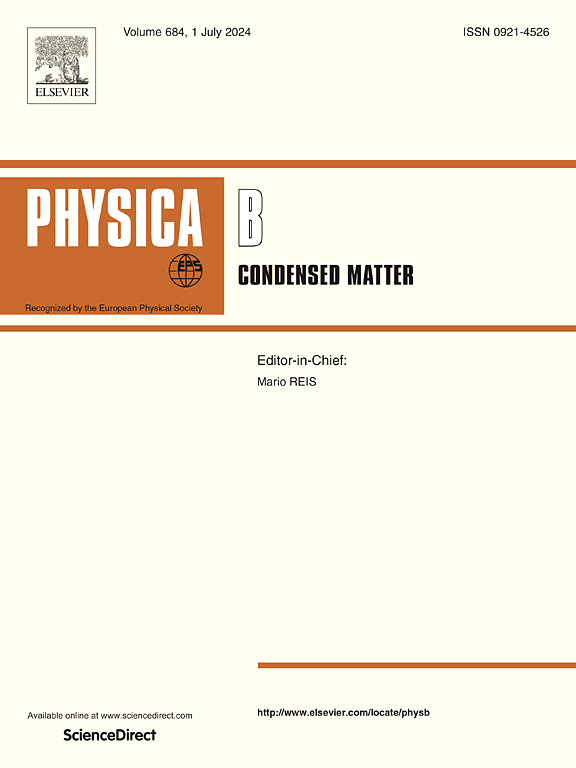Efficiency enhancement in dye-sensitized solar cells through neodymium-doped graphene quantum dot-modified TiO₂ photoanodes
IF 2.8
3区 物理与天体物理
Q2 PHYSICS, CONDENSED MATTER
引用次数: 0
Abstract
This study explored the effects of Neodymium-doped graphene quantum dots (NdGQDs) on improving the performance efficiency of TiO2 based dye-sensitized solar cells (DSSCs). By employing in-situ physical assisted mixing, DSSCs with optimized NdGQDs in TiO2 photoanodes showed a power conversion efficiency of 8.76 %, a significant improvement compared to the 6.01 % efficiency of pristine TiO2-based DSSCs under 100 mW cm⁻2 illumination (AM 1.5). Notably, the short-circuit current density increased by 74 %. HRTEM analysis revealed that the NdGQDs have a size range of approximately 7–9 nm. UV–visible spectroscopy and Mott-Schottky analysis revealed a positive shift in the Fermi level, promoting better electron transfer and increased photocurrent density at the expenses of the open circuit voltage. Electrochemical impedance spectroscopy characterization of DSSCs incorporating NdGQD-modified photoanodes revealed a reduction in electron transfer resistance at the photoanode|dye|electrolyte interface, accompanied by an increase in recombination resistance within the device suppressing the electron recombination rate.
求助全文
约1分钟内获得全文
求助全文
来源期刊

Physica B-condensed Matter
物理-物理:凝聚态物理
CiteScore
4.90
自引率
7.10%
发文量
703
审稿时长
44 days
期刊介绍:
Physica B: Condensed Matter comprises all condensed matter and material physics that involve theoretical, computational and experimental work.
Papers should contain further developments and a proper discussion on the physics of experimental or theoretical results in one of the following areas:
-Magnetism
-Materials physics
-Nanostructures and nanomaterials
-Optics and optical materials
-Quantum materials
-Semiconductors
-Strongly correlated systems
-Superconductivity
-Surfaces and interfaces
 求助内容:
求助内容: 应助结果提醒方式:
应助结果提醒方式:


